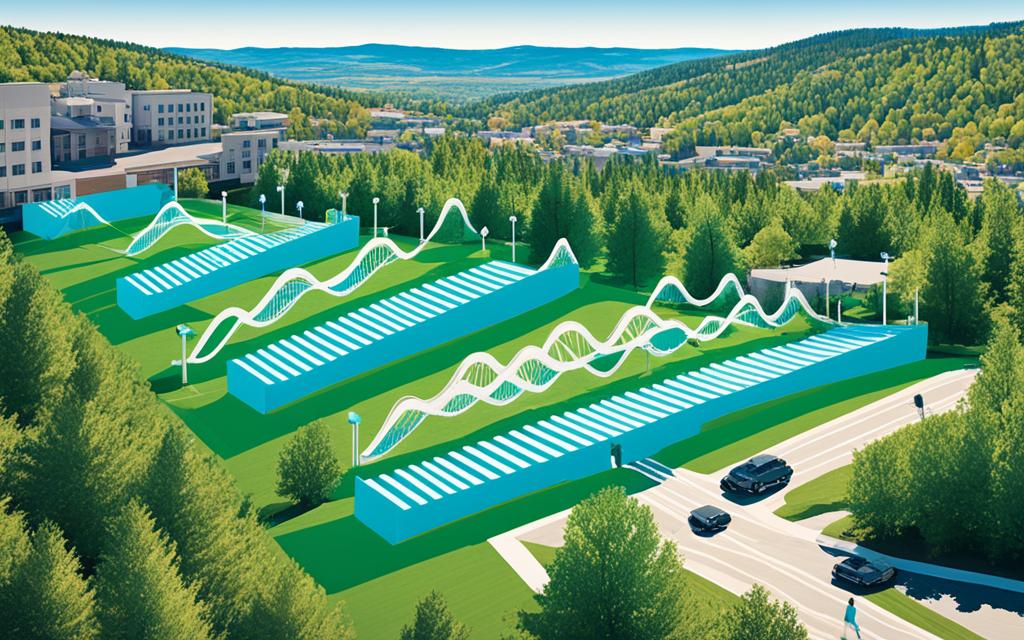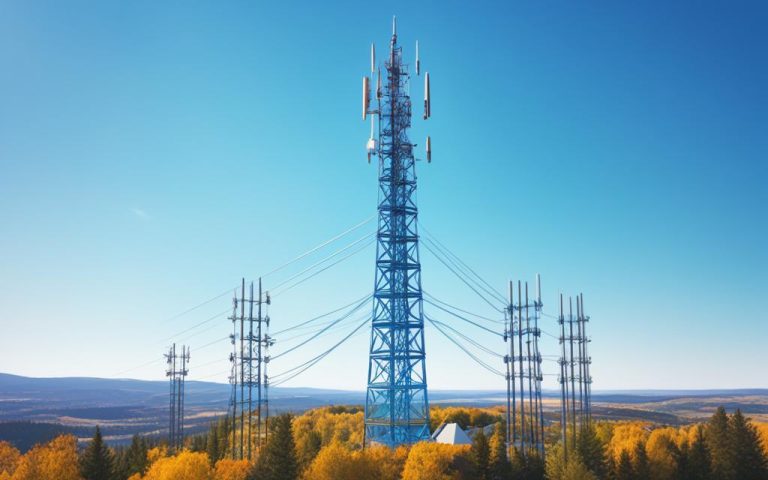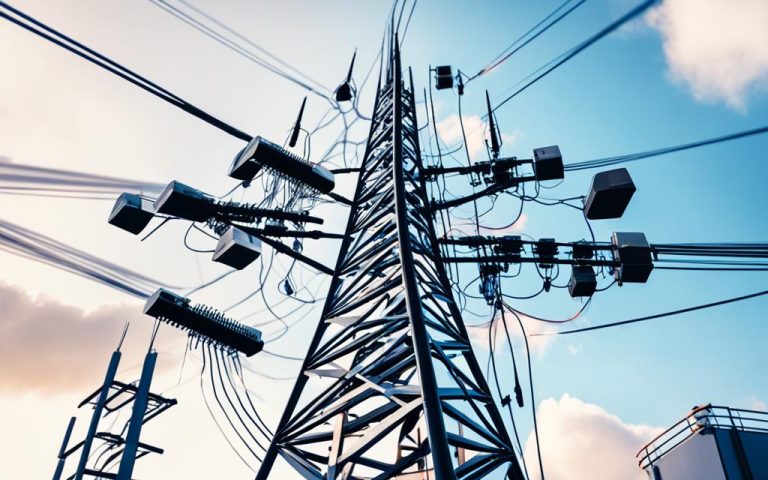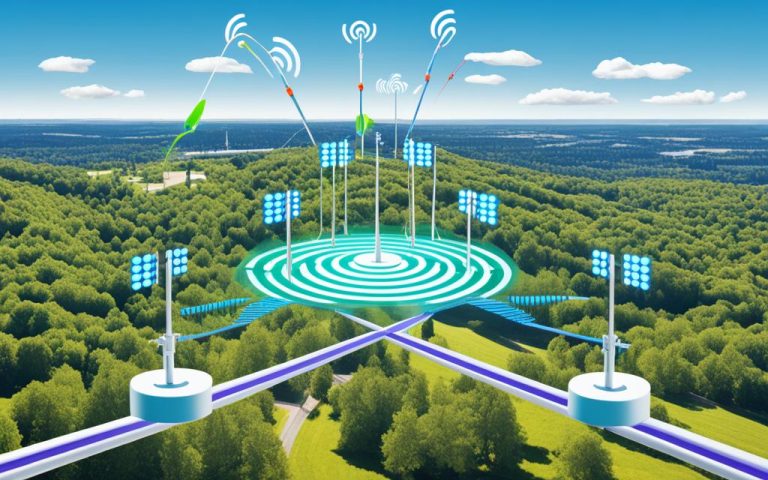Fixed wireless access (FWA) networks have revolutionized connectivity by providing high-speed internet access in areas where traditional wired solutions are challenging to deploy. However, these networks often face significant obstacles when it comes to delivering reliable connectivity, especially in non-line-of-sight (NLoS) scenarios.
NLoS refers to the situations where there are physical barriers between the wireless transmitter and receiver, such as buildings, vegetation, or terrain features. These barriers can disrupt or weaken the wireless signal, leading to reduced coverage, slower link speeds, and less reliable connections.
In order to overcome these challenges, next-generation fixed wireless access (ngFWA) networks have emerged as a game-changing solution. By leveraging advanced technologies such as non-line-of-sight (NLoS) technology, ngFWA networks can deliver fast, stable, and reliable connectivity even in the presence of physical barriers.
In the following sections of this article, we will explore the limitations of legacy FWA systems in NLoS connections, the advantages of ngFWA networks, and the technologies that make NLoS connectivity possible. By understanding the role of NLoS technology in fixed wireless networks, we can unlock the full potential of wireless broadband connectivity and overcome the obstacles that have traditionally limited its reach.
The Challenges of Legacy FWA Systems in NLoS Connections
Legacy fixed wireless access (FWA) systems face significant challenges when it comes to non-line-of-sight (NLoS) connections. Compared to line-of-sight (LoS) connections, NLoS connections in legacy FWA systems result in lower link reliability, reduced speed, and limited range. These limitations have a significant impact on the coverage area that a single base station can serve, leading to the need for more base stations and increased costs.
One of the major drawbacks of NLoS connections in legacy FWA systems is the decrease in link reliability. Obstacles such as buildings, trees, and terrain features obstruct the signal path, causing signal degradation and interruptions. This can result in unreliable connections and poor user experiences.
Furthermore, NLoS connections in legacy FWA systems suffer from slower link speeds compared to LoS connections. The signal loss caused by obstructions reduces the overall data transmission rate, limiting the service tiers that operators can offer to customers. This hinders the ability to provide high-speed internet access in areas with NLoS scenarios.
In addition to the impact on link reliability and speed, the limited range of NLoS connections in legacy FWA systems also poses challenges. The signal strength is significantly weaker in NLoS scenarios, reducing the coverage area that a single base station can serve. This necessitates the deployment of additional base stations to ensure widespread coverage, resulting in higher infrastructure costs for wireless providers.
Moreover, NLoS connections attempted with legacy FWA technology are more susceptible to degradation from changing environmental conditions. Factors such as weather changes, foliage growth, or construction activities can further impact the performance and reliability of NLoS connections, making it difficult for operators to maintain consistent service quality.
The limitations of legacy FWA systems in NLoS connections can be summarized as follows:
- Lower link reliability
- Reduced speed
- Limited range
- Decreased coverage area
- Increased infrastructure costs
To address these challenges and provide improved connectivity in NLoS scenarios, new approaches are needed. Next-generation fixed wireless access (ngFWA) networks offer promising solutions with advanced technologies such as distributed massive multiple-input, multiple-output (DM-MIMO) architecture and beamforming techniques. These advancements enhance link throughput, stability, and reliability, enabling wireless providers to overcome the limitations of legacy FWA systems and deliver faster, more reliable service to a broader customer base.
Introducing Next Generation Fixed Wireless Access (ngFWA) Networks
Next generation fixed wireless access (ngFWA) networks revolutionize the connectivity landscape with their advanced capabilities and innovative architecture. These networks leverage a distributed massive multiple-input, multiple-output (DM-MIMO) architecture, encompassing the base node (BN) on the tower and the remote node (RN) on the subscriber’s home. By incorporating cutting-edge beamforming techniques, ngFWA networks optimize the transmission patterns between the BN and the RN, resulting in enhanced link throughput, stability, reliability, and low latency.
Through a collaborative closed-loop process, the BN and RN continuously adapt and refine their beamforming solutions to maximize performance, ensuring reliable, stable, and high-speed connections. The ngFWA networks defy traditional limitations and cover previously inaccessible distances, including non-line-of-sight (NLoS), line-of-sight (LoS), and near line-of-sight scenarios.
The advantages of ngFWA networks extend beyond their advanced architecture and beamforming capabilities. These networks enable wireless providers to offer faster and more reliable service to a broader customer base without the need for extensive infrastructure upgrades. By leveraging ngFWA, wireless providers can deliver seamless connectivity experiences and address the growing demand for high-speed internet access.
Key Features of ngFWA Networks:
- Advanced distributed massive multiple-input, multiple-output (DM-MIMO) architecture
- Innovative beamforming techniques for optimized link performance
- Collaborative closed-loop process for continuous adaptation and refinement
- Improved link throughput, stability, reliability, and low latency
- Expanded coverage distances for NLoS, LoS, and near line-of-sight scenarios
- Cost-effective solution without extensive infrastructure upgrades
With ngFWA networks, a new era of connectivity unfolds, empowering wireless providers to overcome obstacles and deliver reliable and high-speed internet services to customers.
| Network Feature | Description |
|---|---|
| Distributed Massive Multiple-Input, Multiple-Output (DM-MIMO) Architecture | Enables the utilization of multiple antennas at the base node (BN) and remote node (RN), improving link performance and coverage |
| Beamforming Techniques | Optimizes signal transmission patterns between BN and RN, resulting in enhanced link quality and stability |
| Collaborative Closed-Loop Process | Continuous adaptation and refinement of beamforming solutions for optimal performance |
| Improved Link Throughput | Enhanced data transmission speeds for faster and more efficient connectivity |
| Stability and Reliability | Uninterrupted and consistent connectivity even in challenging NLoS environments |
| Low Latency | Minimized delay in data transmission, providing a seamless user experience |
Limitations of Wi-Fi-Based FWA Systems in NLoS Connections
Wi-Fi-based fixed wireless access (FWA) systems, while popular for their low cost and accessibility, have limitations in non-line-of-sight (NLoS) connections. The physical obstructions present in NLoS environments, such as buildings and vegetation, significantly impede connectivity and can lead to signal loss. Additionally, Wi-Fi technology itself has protocol overhead and limitations in mitigating interference, resulting in degraded network performance as the number of clients increases.
These limitations make Wi-Fi-based FWA systems unsuitable for reliable residential broadband at scale. To deliver the required performance, operators are turning to next-generation fixed wireless access (ngFWA) networks that address these limitations and provide high-capacity, reliable broadband service in NLoS environments.
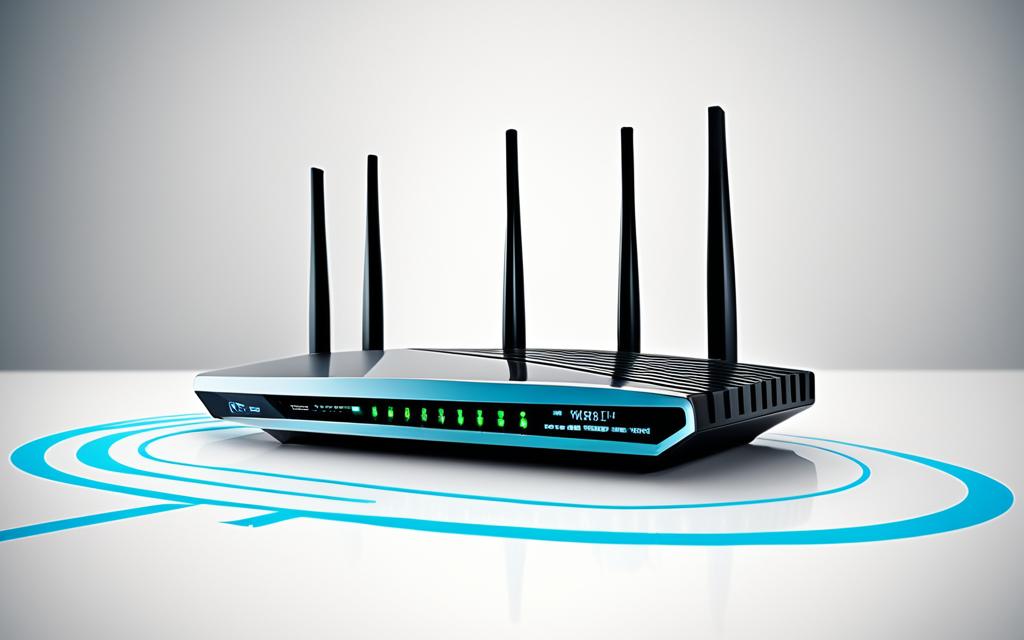
| Limitations of Wi-Fi-Based FWA Systems in NLoS Connections | Next-Generation ngFWA Networks |
|---|---|
| Physical obstructions impede connectivity | Uses advanced beamforming techniques to optimize signal transmission and overcome obstacles |
| Wi-Fi technology has limitations in mitigating interference | Utilizes interference cancellation techniques for improved network performance |
| Signal loss in NLoS scenarios | Offers reliable, stable, and high-speed connectivity even in challenging NLoS environments |
| Unsuitable for reliable residential broadband at scale | Addresses limitations and provides high-capacity, reliable broadband service |
“Wi-Fi-based FWA systems face significant limitations in non-line-of-sight connections due to physical obstructions and interference issues. These limitations can significantly degrade network performance, making them unsuitable for reliable residential broadband at scale. The emergence of next-generation fixed wireless access (ngFWA) networks presents a solution that overcomes these limitations, delivering high-capacity and reliable broadband service even in complex NLoS environments.”
The Advantages of ngFWA in NLoS Propagation
Next-generation fixed wireless access (ngFWA) networks offer several advantages in non-line-of-sight (NLoS) propagation. These networks utilize techniques such as interference cancellation and adaptive beamforming to overcome the challenges posed by obstructions and environmental conditions. By dynamically adjusting the signal transmission and reception, ngFWA networks can maintain reliable broadband connectivity even in complex NLoS environments.
This allows for seamless communication between ground personnel, vehicles, and command centers, improving operational efficiency and ensuring the delivery of mission-critical information. NgFWA networks also offer high-capacity and scalable solutions, making them ideal for expanding wireless broadband coverage in hard-to-reach areas.
| Advantages of ngFWA in NLoS Propagation |
|---|
| 1. Interference cancellation |
| 2. Adaptive beamforming |
| 3. Reliable broadband connectivity |
| 4. Seamless communication in complex NLoS environments |
| 5. Improved operational efficiency |
| 6. Delivery of mission-critical information |
| 7. High-capacity and scalable solutions |
| 8. Enhanced wireless broadband coverage in hard-to-reach areas |
Note: The advantages of ngFWA in NLoS propagation make it an advanced solution for overcoming obstructions and ensuring reliable broadband connectivity.
https://www.youtube.com/watch?v=LKCYFicd2NI
Overcoming NLoS Challenges with ngFWA Technologies
Next-generation fixed wireless access (ngFWA) networks utilize advanced technologies to overcome challenges in non-line-of-sight (NLoS) scenarios, ensuring reliable and high-capacity connectivity.
Coded Orthogonal Frequency-Division Multiplexing (COFDM)
COFDM is a key technology employed by ngFWA networks to address frequency selectivity and data loss in NLoS environments. It achieves this by redundantly coding information onto multiple subcarriers, enhancing the robustness and reliability of the transmitted signal.
Multiple-Input, Multiple-Output (MIMO) Antenna Techniques
MIMO antenna techniques play a crucial role in ngFWA networks, improving range, throughput, and robustness. By utilizing multiple antennas at the transmitter and receiver, MIMO enables ngFWA systems to mitigate the effects of NLoS obstructions and enhance wireless communication performance.
Eigen-Beamforming
Eigen-beamforming is a dynamic signal processing technique implemented in ngFWA networks. It optimizes the reception of signals in NLoS conditions by adjusting the phase and amplitude of the transmitted signal. This adaptive approach allows for better signal reception, even in complex NLoS environments.
Space-Time Coding
Space-time coding is another technology utilized by ngFWA networks to enhance data robustness in NLoS scenarios. By adding redundancy to the signal in both space and time, space-time coding improves the reliability and error resilience of the transmitted data. This helps overcome challenges posed by NLoS obstructions.
Spatial Multiplexing
Spatial multiplexing is a technique that leverages multiple antennas to increase data rates and spectral efficiency in NLoS environments. By utilizing multiple spatial streams, spatial multiplexing improves the overall capacity and performance of ngFWA networks in NLoS scenarios.
Combined, these technologies work in synergy to ensure reliable and high-capacity connectivity in ngFWA networks, overcoming the challenges posed by NLoS obstructions.
Comparison of ngFWA Technologies
| Technology | Benefits |
|---|---|
| Coded Orthogonal Frequency-Division Multiplexing (COFDM) | – Address frequency selectivity and data loss in NLoS environments |
| Multiple-Input, Multiple-Output (MIMO) Antenna Techniques | – Improve range, throughput, and robustness in NLoS scenarios |
| Eigen-Beamforming | – Dynamically optimize signal reception in NLoS conditions |
| Space-Time Coding | – Enhance data robustness and error resilience in NLoS environments |
| Spatial Multiplexing | – Increase data rates and spectral efficiency in NLoS scenarios |
Conclusion
Next-generation fixed wireless access (ngFWA) networks have revolutionized connectivity by overcoming the obstacles faced by traditional fixed wireless systems in non-line-of-sight (NLoS) connections. Through advanced beamforming techniques, interference cancellation, and adaptive technologies, ngFWA networks deliver reliable, stable, and high-speed connectivity even in challenging NLoS environments.
One of the key advantages of ngFWA networks is improved link throughput, which allows for faster data transfer and enhanced user experience. These networks also enable extended coverage distances, reaching areas that were previously inaccessible. By leveraging ngFWA technology, wireless providers can expand their service offerings to a broader customer base without the need for extensive infrastructure upgrades.
Additionally, ngFWA networks offer a cost-effective solution to overcome the limitations of legacy FWA systems in NLoS connections. By defying physical barriers, ngFWA technology provides reliable connectivity in challenging environments, ensuring that customers can enjoy seamless internet access at home or in remote locations.
In conclusion, ngFWA networks have emerged as a practical and efficient solution to enhance connectivity in fixed wireless networks. With the ability to overcome obstacles and deliver reliable connectivity, ngFWA paves the way for a new era of wireless broadband connectivity.
FAQ
What are the challenges faced by legacy FWA systems in NLoS connections?
Legacy FWA systems in NLoS connections face challenges such as lower link reliability, speed, and range compared to line-of-sight (LoS) connections. This results in decreased coverage area, the need for more base stations, and higher costs. Slower link speeds also limit the service tiers that operators can offer.
How do ngFWA networks overcome NLoS obstacles?
NgFWA networks overcome NLoS obstacles by utilizing a distributed massive multiple-input, multiple-output (DM-MIMO) architecture and advanced beamforming techniques. By shaping transmission patterns and optimizing link performance, ngFWA improves link throughput, stability, reliability, and low latency, allowing for reliable, stable, and high-speed connections even in NLoS scenarios.
What are the limitations of Wi-Fi-based FWA systems in NLoS connections?
Wi-Fi-based FWA systems have limitations in NLoS connections due to physical obstructions such as buildings and vegetation. These obstructions can significantly impede connectivity and lead to signal loss. Additionally, Wi-Fi technology has protocol overhead and limitations in mitigating interference, resulting in degraded network performance as the number of clients increases.
What advantages do ngFWA networks offer in NLoS propagation?
NgFWA networks offer advantages such as interference cancellation and adaptive beamforming, allowing them to maintain reliable broadband connectivity even in complex NLoS environments. These networks enable seamless communication between ground personnel, vehicles, and command centers, improving operational efficiency and ensuring the delivery of mission-critical information. NgFWA networks also provide high-capacity and scalable solutions for expanding wireless broadband coverage in hard-to-reach areas.
How do ngFWA technologies overcome NLoS challenges?
NgFWA technologies such as Coded Orthogonal Frequency-Division Multiplexing (COFDM), Multiple-Input, Multiple-Output (MIMO) antenna techniques, Eigen-Beamforming, Space-Time Coding, and Spatial Multiplexing work together to overcome NLoS challenges. These technologies address frequency selectivity, data loss, range, throughput, robustness, and data rates in NLoS environments, ensuring reliable and high-capacity connectivity in ngFWA networks.
What role does ngFWA play in fixed wireless networks?
NgFWA networks play a crucial role in overcoming the obstacles faced by traditional fixed wireless systems in NLoS connections. By leveraging advanced beamforming techniques, interference cancellation, and adaptive technologies, ngFWA networks provide reliable, stable, and high-speed connectivity, extending coverage distances and reducing infrastructure costs. NgFWA enables wireless providers to offer faster, more reliable service to a broader customer base, defying physical barriers and enhancing connectivity in fixed wireless networks.

